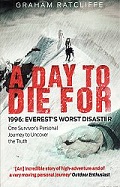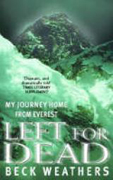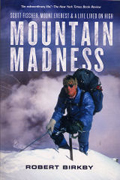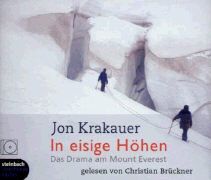A personal account of the Mt. Everest disaster.
On May 9th 1996, five expeditions launched an assault on the summit of Mount
Everest. The conditions seemed perfect.
Twenty-four hours later one climber had died and 23 other men and women were
caught in a desperate struggle for their lives as they battled against a
ferocious storm that threatened to tear them from the mountain. In all eight
climbers died that day in the worst tragedy Everest has ever seen.
This updated trade paperback edition of Into Thin Air includes an extensive
new postscript that sheds fascinating light on the acrimonious debate that
flared between Krakauer and Everest guide Anatoli Boukreev in the wake of the
tragedy. «I have no doubt that Boukreev’s intentions were good on summit
day,» writes Krakauer in the postscript, dated August 1999. «What disturbs
me, though, was Boukreev’s refusal to acknowledge the possibility that he made
even a single poor decision. Never did he indicate that perhaps it wasn’t the
best choice to climb without gas or go down ahead of his clients.»
As usual, Krakauer supports his points with dogged research and a good dose of
humility. But rather than continue the heated discourse that has raged since
Into Thin Air’s denouncement of guide Boukreev, Krakauer’s tone is
conciliatory; he points most of his criticism at G. Weston De Walt, who
coauthored The Climb, Boukreev’s version of events. And in a touching
conclusion, Krakauer recounts his last conversation with the late Boukreev, in
which the two weathered climbers agreed to disagree about certain points.
Krakauer had great hopes to patch things up with Boukreev, but the Russian
later died in an avalanche on another Himalayan peak, Annapurna I.
Recommendations on the topic
Documentations
Documentations
Documentations
Documentations
Video/ DVD/ Multimedia







